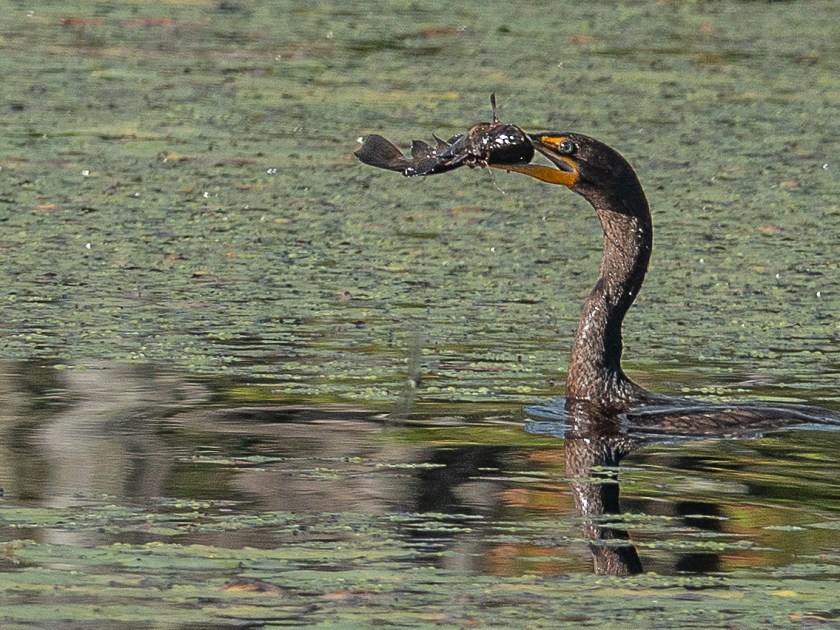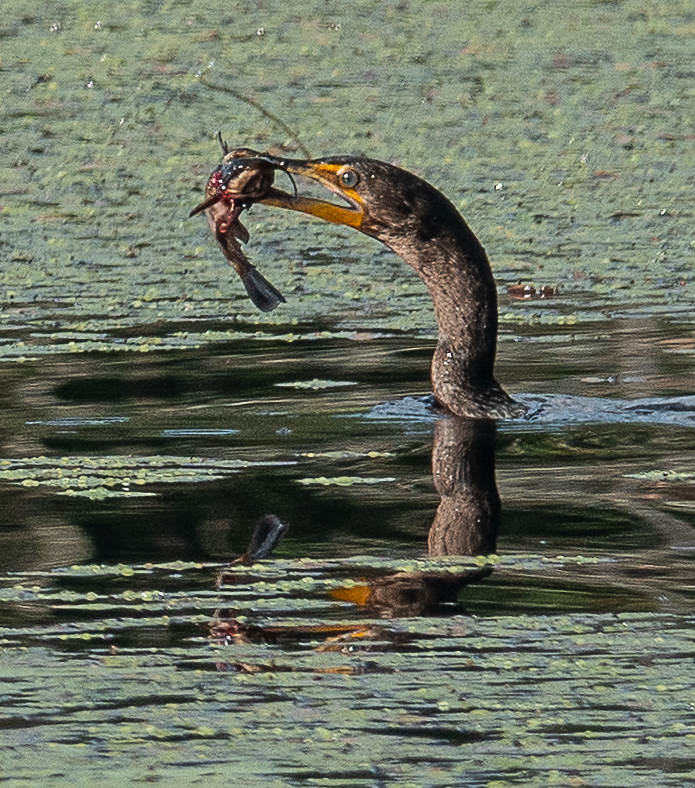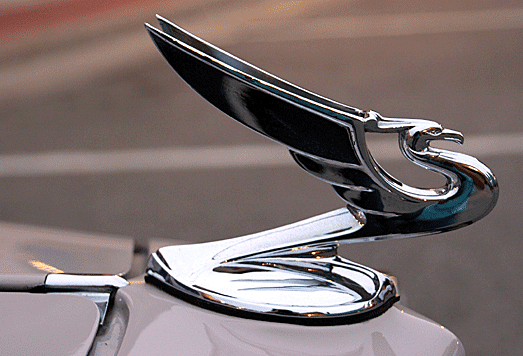[This post is prompted by an encounter on my beaver pond. Skip ahead, if you wish!]
There are 40 species of cormorants (including shags) in the world. The scientific family name Phalacrocorax comes from φαλακρός (phalakros, “bald”) and κόραξ (korax, “raven”).
The Great Cormorant, Phalacrocorax carbo, is widely distributed in Europe and Asia. They come far inland, even to the Cotswolds, and there are lots of them on the Serpentine in Central London!

They have fine strong curved beaks:

That beak is a highly effective fish-catcher, a fact not lost on the Chinese, who traditionally used them in fishing. A cord was tied round the cormorant’s neck just tightly enough to stop it swallowing the fish, and the fisherman would then retrieve it. Nowadays they follow the tourist boats on the Li river in Guilin, where I took this photo in 2007:

In the eastern US we have the Double-Crested Cormorant, Nannopterum auritum.

This one is drying its wings on the coast in Friendship, Maine:

They come inland to a greater extent than most other cormorant species, and last week, for the first time, I had one on my beaver pond. And I photographed it just as it caught a pretty big fish, entangled in weeds:

The fish did not give up easily:

This video shows you just how wriggly it was:
but eventually it succumbed:

And this cormorant got to eat its own catch, though part of me felt bad for my otters, who have one less fish in their pond.
PS After this encounter, Hoss, a neighbor, told me that two days earlier he had seen a big black bird with a long neck run across the road by our barn. This must have been the cormorant, and somehow it found the pond, over a mile away deep in the forest.
PPS In heraldry, the cormorant denotes wisdom and watchfulness. Amongst the long history of cultural references, two of my favorites: Ulysses was rescued by a sea-nymph in the guise of a cormorant. And post-Homer, a cormorant was chosen as the hood ornament of the Packard automobile.

PPPS For hard-core readers only, because the photo is boring! Little Cormorants, Microcarbo niger, are found in India. You can compare their size to the Grey Heron and the Open-Billed Stork with whom they are sharing their tree.

That 5th photo with the feather tufts & topaz-jeweled eyes is great! Do you think it caught a catfish in your pond? I think your pond is teeming with fish!
LikeLike
Great blog
Get Outlook for iOShttps://aka.ms/o0ukef
LikeLike